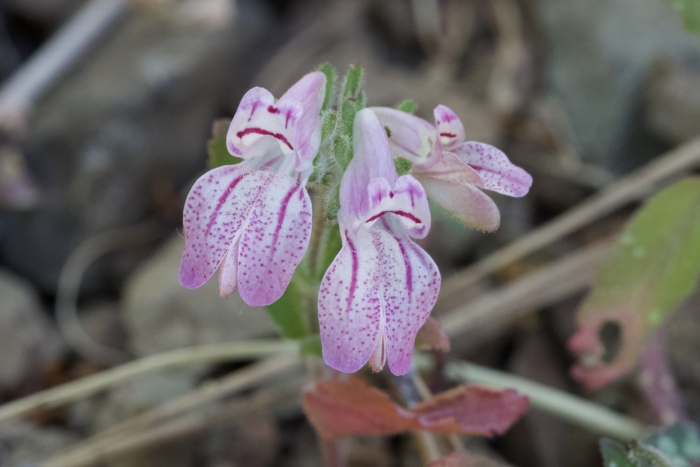Sticky Chinese Houses
(Collinsia tinctoria)
Sticky Chinese Houses (Collinsia tinctoria)
/
/

© Arvel Hernandez
CC BY-SA 4.0
Image By:
© Arvel Hernandez
Recorded By:
Copyright:
CC BY-SA 4.0
Copyright Notice:
Photo by: © Arvel Hernandez | License Type: CC BY-SA 4.0 | License URL: http://creativecommons.org/licenses/by-sa/4.0/ | Uploader: arvel | Publisher: iNaturalist |























Estimated Native Range
Summary
Collinsia tinctoria, commonly known as Sticky Chinese Houses or Tincture Plant, is an annual herb native to the chaparral, oak woodlands, and lower montane forests of California’s central and northern mountain ranges. It typically grows to a sturdy height of up to 24 inches with triangular lance-shaped leaves. The inflorescence is characterized by dense whorls of flowers that exhibit a color gradient from white to deep lavender, often with speckles or tints in the throat, blooming from late spring to early summer. The plant’s glandular and hairy texture adds visual interest to its surroundings.
In cultivation, Collinsia tinctoria is appreciated for its vibrant and showy flowers, which can add a splash of color to wildflower gardens, borders, and naturalized areas. It is relatively easy to maintain, requiring minimal care once established. This species prefers well-drained soils and can tolerate partial shade to full sun conditions. While it is not commonly found in nurseries, it can be grown from seed and is a good choice for gardeners looking to create a native plant garden. Potential problems include susceptibility to powdery mildew in humid conditions. It is not known to be invasive when grown outside its native range, but as with all native plants, care should be taken to ensure it does not outcompete local flora.CC BY-SA 4.0
In cultivation, Collinsia tinctoria is appreciated for its vibrant and showy flowers, which can add a splash of color to wildflower gardens, borders, and naturalized areas. It is relatively easy to maintain, requiring minimal care once established. This species prefers well-drained soils and can tolerate partial shade to full sun conditions. While it is not commonly found in nurseries, it can be grown from seed and is a good choice for gardeners looking to create a native plant garden. Potential problems include susceptibility to powdery mildew in humid conditions. It is not known to be invasive when grown outside its native range, but as with all native plants, care should be taken to ensure it does not outcompete local flora.CC BY-SA 4.0
Plant Description
- Plant Type: Herb
- Height: 0.5-1.5 feet
- Width: 0.5-1 feet
- Growth Rate: Rapid
- Flower Color: Purple, White, Yellow
- Flowering Season: Spring, Summer
- Leaf Retention:
Growth Requirements
- Sun: Full Sun, Part Shade
- Water: Medium
- Drainage: Medium, Fast
Common Uses
Bee Garden, Butterfly Garden, Low Maintenance
Natural Habitat
Chaparral, oak woodlands, and lower montane forests
Other Names
Common Names: Sticky Blue-Eyed Mary, Sticky Chinese Houses
Scientific Names: , Collinsia tinctoria, Collinsia barbata, Collinsia septemnervia, Collinsia tinctoria,
GBIF Accepted Name: